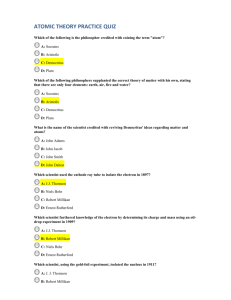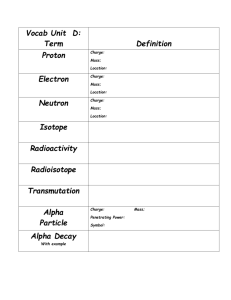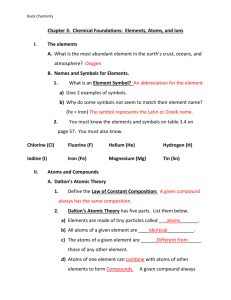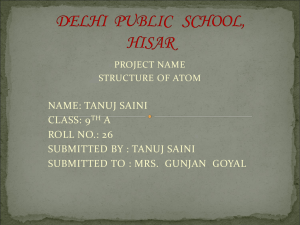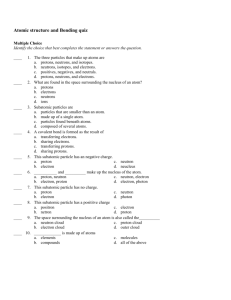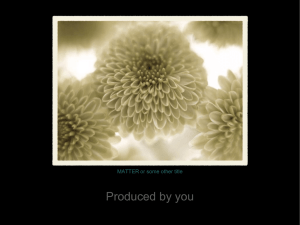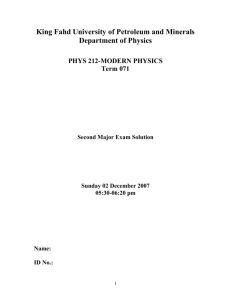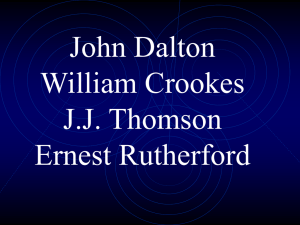Skeleton of - Science802
advertisement
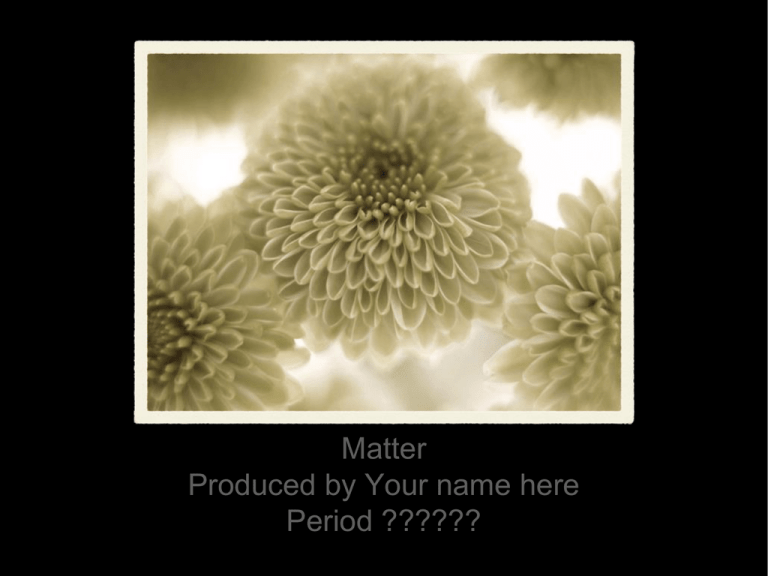
Matter Produced by Your name here Period ?????? Contents • Matter Matter Atoms • Atoms Molecule • Molecules Dark Matter • Elements Elements Natural • natural Synthetic • synthetic Dark Energy Nucleus • Nucleus • Baryons • • • Quarks Leptons • Electrons • Neutrinos Bosons • Photons • Gluons • W Bosons • Protons • S Bosons • Neutrons • Higgs Bosons Neutrino Electron Boson Quark Proton Lepton Neutron Bayron Matter • Mass • Volume • Not Energy Atoms • Basic Unit • Chemical Element • Chemical Unit Molecule A group of atoms bonded together. Element compound Dark Matter Entire universe. Matter Exists in space Elements • Primary • Natural • Synthetic Natural • Untouched • Real • Elements Synthetic Element Not natural Made Dark Energy • Force • Accelerating • Counteracts gravity Nucleus • Central • Important • Basis for activity and growth Baryons • Subatomic particle • Nucleon • Greater or equal to a proton Proton • Stable subatomic particle • In all atomic nuclei that has a positive electric charge • electron Lepton • Basic • Matter • 3 electrical and 3 not electrical, total of 6 Neutron • Subatomic particle • About the same mass as a proton • All atomic nuclei but not those of ordinary hydrogen. Neutrino • Neutral • Subatomic particle • Mass close to zero Electron • Stable • Subatomic particle • negative Bosons • Subatomic • Proton • Particle Quarks • Subatomic • Fractional electric charge • hadrons Democritus 460 - 370 BCE Idea of the atom Antoine Lavoisier (1743-1794) Proposed the Law of Conversation of Mass Joseph Proust (1754-1826) Proposed Law of Constant Composition in 1799 John Dalton (1776-1844) Proposed the Law of Multiple Proportions John Dalton (1776-1844) - Continued 1. The elements are made of atoms, which are tiny particles, too small to see. 2. All atoms of a particular element are identical. 3. Atoms of different elements have different properties: their masses are different, and their chemical reactions are different. 4. Atoms cannot be created, destroyed or split. 5. In a chemical reaction, atoms link to one another, or separate from one another. 6. Atoms combine in simple whole-number ratios to form compounds. J. J. Thomson (1856-1940) Identified the negatively charged electron in 1897 Marie Curie (1867–1934) 1898 Discovered radioactive elements Robert Millikan (1868-1953) Determined the unit charge of the electron in 1909. Ernst Rutherford (1871-1937) 1911 - Proposed the nuclear atom 1920 - First referred to the hydrogen nucleus as a proton 1920 - Proposed the existence of the third atomic particle, the neutron Niels Bohr (1885–1962) 1913 - Electrons move around the nucleus of the atom in restricted orbits and explained the manner in which the atom absorbs and emits energy Erwin Schrödinger and Werner Heisenberg 1926 Devise a quantum theory of Non-Bohr Electron Cloud James Chadwick (1891-1974) Discovered the neutron in 1932 Lise Meitner (1878–1968) 1938 Meitner was part of the team that discovered nuclear fission. Peter Higgs (1929 – ) 1960s - Proposed the Higgs Boson Proven at CERN in 2012

